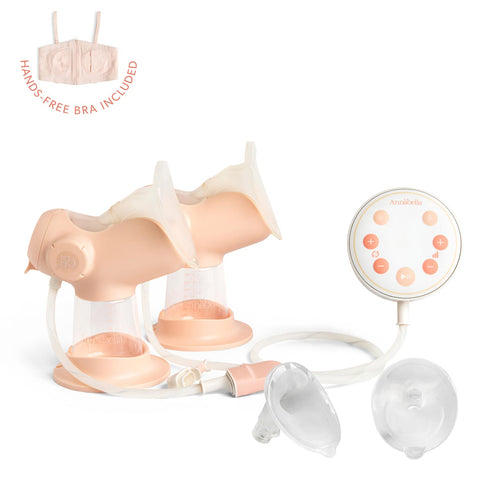Welcoming a new baby is exciting but brings many questions. Feeding your baby is often a top concern. If you’ve heard about pumping colostrum but feel unsure how to start, you’re not alone.
Colostrum, often called “liquid gold,” is the very first milk your body makes. It is packed with vital nutrients and immune-boosting antibodies to protect your baby’s health. La Leche League International highlights how important even small amounts of colostrum are for newborns
This guide will walk you through how to safely and confidently pump colostrum milk. With gentle techniques and the right tools, you can provide your baby with this precious, protective first milk.
What is Colostrum Milk? – Drops of Gold
Colostrum is the first milk your body produces late in pregnancy and during the first few days after birth. According to La Leche League International, colostrum is thick, yellow, and packed with protective nutrients. It contains proteins, antibodies, and vitamins that support your baby’s developing immune system. These components help protect your newborn from infections in those first crucial days.
Colostrum also plays a vital role in your baby’s digestion. It coats the digestive tract to prepare it for digesting milk and helps your baby pass their first stool. This can lower the risk of jaundice, a common concern in newborns.
Unlike mature milk, colostrum is produced in small amounts. But every single drop matters because it is so nutrient-dense and immune-supportive. Pumping colostrum allows you to collect and provide this precious milk, especially if your baby cannot nurse right away. Whether you hand express or use a breast pump for colostrum, you are giving your baby a powerful start in life during their most vulnerable time.
Why Colostrum Milk is important for your Newborn?
There are many reasons you might need to start pumping colostrum before or after your baby’s birth. Sometimes, your healthcare specialist may recommend it for medical reasons. Other times, direct breastfeeding might not be possible right away. In these moments, pumping colostrum offers comfort and ensures your baby still receives vital nutrition.
The Academy of Breastfeeding Medicine advises parents to pump colostrum if their baby is in the NICU or having trouble latching. Babies born by planned C-section often benefit from expressed colostrum while they learn to feed. Some parents are even encouraged to begin hand expressing colostrum after 36 weeks of pregnancy to prepare.
Certain health conditions, like diabetes, make pumping colostrum especially important. Colostrum helps stabilize your baby’s blood sugar and supports their early growth. Whether you choose hand expression or use a breast pump for colostrum, you are giving your baby a strong, protective start. Always check with your healthcare specialist before starting to express colostrum.
How to Pump Colostrum: Step-by-Step
Pumping colostrum may feel new and unfamiliar, but with gentle care and simple steps, it becomes easier. These steps follow widely accepted breast milk storage guidelines to keep your colostrum safe and nourishing. Safely collecting and storing colostrum helps maintain its powerful immune properties for your baby.
Prepare your space and supplies
First, wash your hands thoroughly with soap and water to keep everything clean. Gather a sterile container, syringe, or colostrum collector to catch the drops. If you plan to use a breast pump for colostrum, have it ready and clean before you begin.
Use a warm compress and gentle massage
Applying a warm cloth or compress on your breasts for a few minutes helps relax your milk ducts. Then, gently massage your breasts in circular motions, moving toward the nipple. This encourages colostrum to flow and makes expression easier.
Try hand expression first
For the small amounts of colostrum typical in early days, hand expression often works best. Place your thumb and fingers in a “C” shape around the areola, the dark area around your nipple. Gently press back toward your chest wall, then compress and release. Repeat this rhythm to collect drops.
Using a breast pump for colostrum
A manual breast pump for colostrum is ideal for small volumes. Some parents, especially those with babies in the NICU, use hospital-grade electric pumps. If using a pump, choose low suction to avoid discomfort. Remember, your comfort matters.
Collecting and storing colostrum safely
Collect the colostrum in your sterile container or syringe. Label it clearly with the date and time of collection. Store the colostrum in the refrigerator for up to 48 hours. For longer storage, freeze it following breast milk freezing protocols. Small amounts freeze well and can be thawed as needed.
Tips for Successful Colostrum Pumping
The early days after birth can feel overwhelming, but staying calm and supported makes pumping colostrum much easier. The International Breastfeeding Centre explains that even tiny drops of colostrum are packed with immune-boosting benefits for your baby. Warm compresses, gentle massage, and relaxed breathing can help your body release colostrum more easily.
Staying hydrated and rested also supports your body’s ability to produce colostrum. Aim to pump or hand express every 2 to 3 hours, especially if your baby is not nursing well. Skin-to-skin contact with your baby helps stimulate colostrum production and strengthens your bond, according to the International Breastfeeding Centre. Many parents find holding their baby close encourages milk flow and boosts confidence.
When collecting pumped colostrum, always label it clearly with the date and time. Widely accepted breast milk storage guidelines recommend storing small portions to avoid waste. Whether you use hand expression or a breast pump for colostrum, be patient with yourself. Learning to pump colostrum milk takes time, but every drop supports your baby’s health and provides vital protection.
From Colostrum to Mature Milk Pumping
Your mature milk usually “comes in” about 2 to 5 days after birth. The Academy of Breastfeeding Medicine explains that your breasts may feel fuller, and your milk flow will noticeably increase. This is a natural sign your body is ready to shift from pumping colostrum to collecting mature milk.
At this stage, it helps to adjust your pumping routine. Many parents continue using a breast pump for colostrum, while others switch to a hospital-grade electric pump for greater efficiency. Pumping regularly helps establish and maintain your milk supply.
Keep an eye on your baby’s contentment and your milk volume. If you feel unsure, speak with a lactation consultant for guidance. With patience and support, pumping colostrum and mature milk becomes a confident part of your routine and gives your baby the nourishment they need.
Every Drop Counts
Pumping colostrum gives your baby vital nourishment and immune protection in their first days of life. Even tiny amounts of colostrum have powerful benefits. It’s important to remember that the amount of colostrum collected varies for every parent. Your body is unique, and every drop counts.
If you feel unsure, reach out to your healthcare specialist or a lactation consultant. With patience and support, pumping colostrum milk becomes a simple, loving way to care for your newborn.







